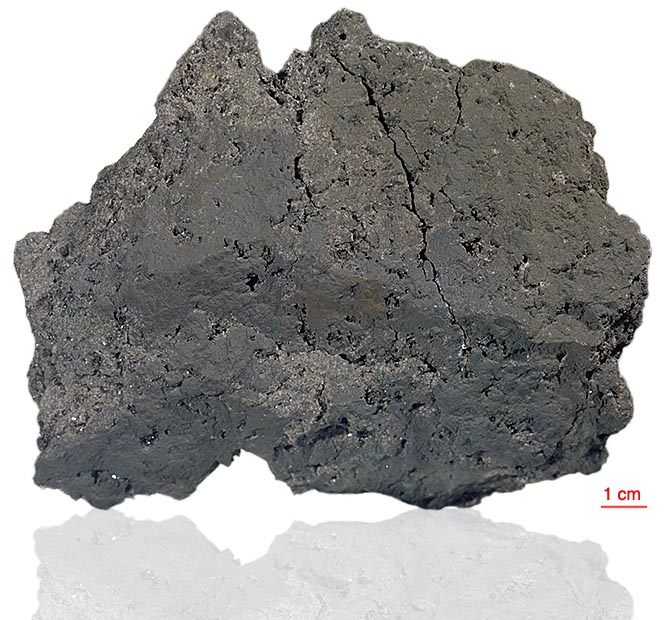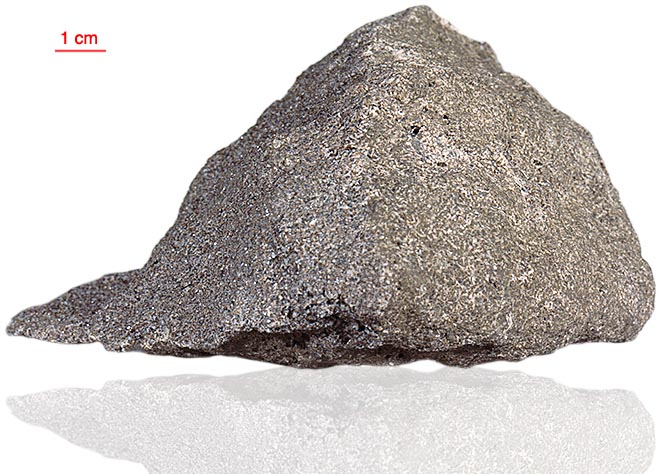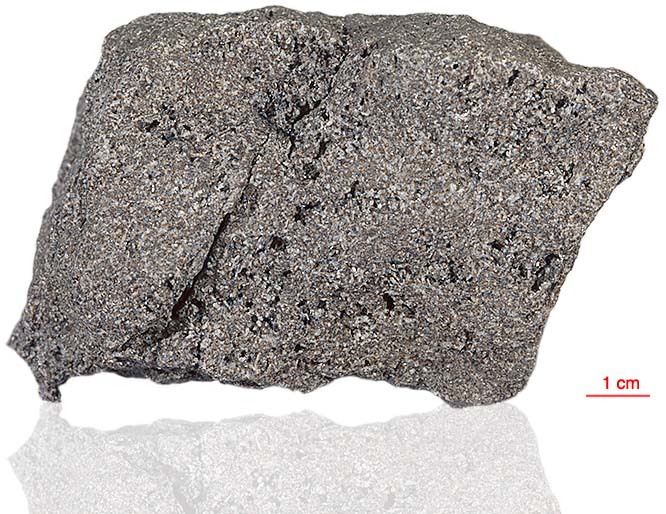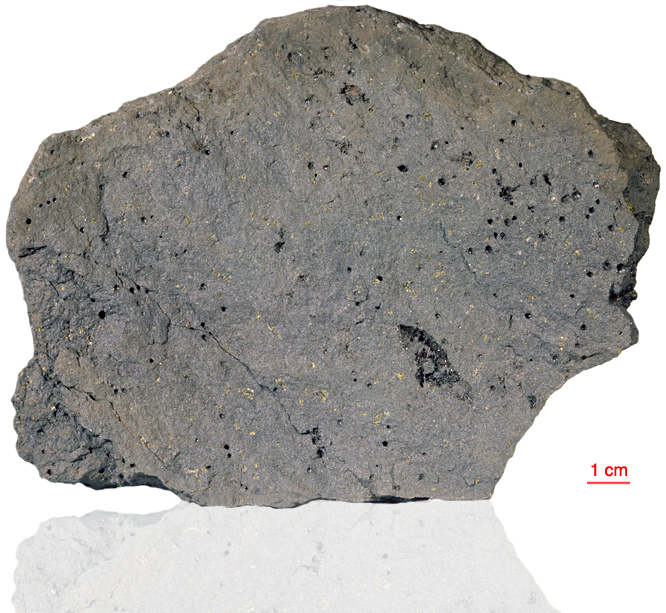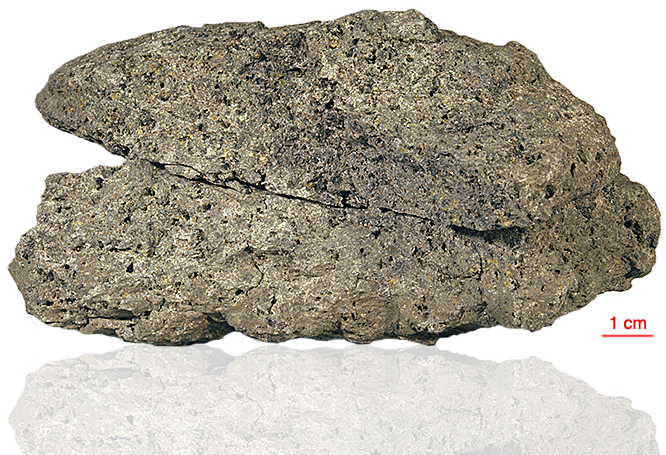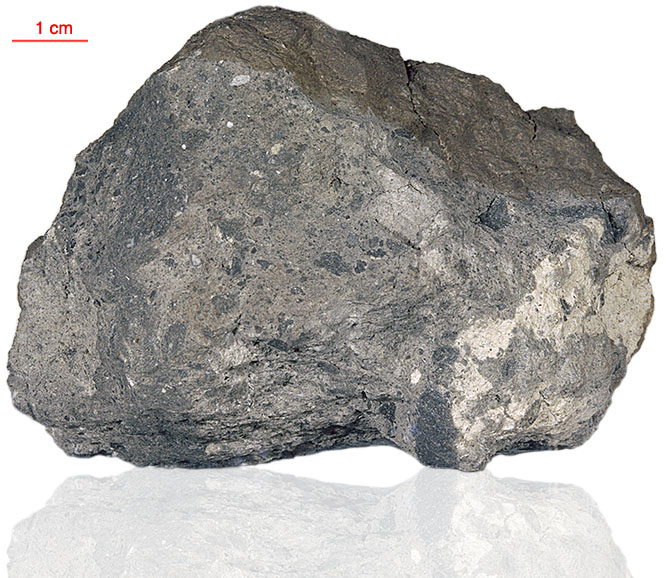
Fact sheet
72215 was collected from the side of a layered boulder. Samples 72235, 72255 and 72275 are from other layers in this boulder. It contains intricate swirls of light and dark, interlayered, crushed highland materials produced in an as yet unexplained fluidized impact mechanism. The dark portions are finer-grained and the lighter are coarser-grained, but both portions are found to have similar bulk composition. Six domains have been described.
The sample is a coherent, clast-rich, impact melt breccia. It is aluminous and feldspathic and contains numerous small patches of granitic material. The granitic clasts have high silica (>75%) and high K2O contents (~6%). They are made of various intergrowths of silica, Ba-K feldspar, plagioclase feldspar and Fe-rich pyroxene. Some basalt clasts contain pink spinel. Rotations shows clasts of anorthositic norite.
The sample weighed 379.2 grams before analysis and has been dated at 3.83-4.02 billion years (Ar/Ar).
Further details of this and other Apollo samples are here: http://curator.jsc.nasa.gov/lunar/
Apollo 17, the final manned landing mission, had two objectives: to obtain samples of ancient rocks from the lunar highlands and to look for evidence of younger volcanic activity on the valley floor.
This small Collection contains material deriving from both periods, including igneous rocks around 4.3 billion years old from the lunar highlands as well as younger volcanic samples dating from about 3.6 billion years ago.
Apollo 17 was launched on 7 December 1972.

